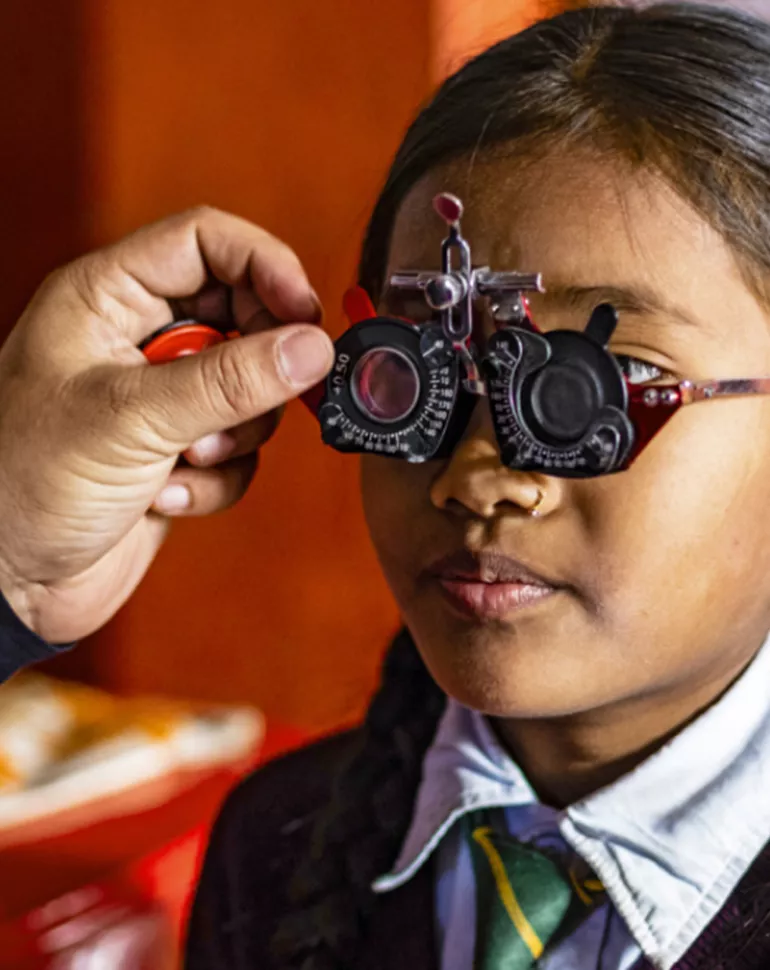Back-to-school season is here! For the ECP, this time of year should be an opportunity to prep your practice for conversations around children’s eye health.
Below are some tools, resources, and tips for enabling these specific patient conversations, improving the patient experience overall, and offering the right lens solutions for a new school year.
School screenings help but don’t solve
School vision screenings are useful for detecting certain vision problems like nearsightedness; however, they aren’t performed by eye care professionals trained for specific vision conditions and issues. The screening is very limited, and often many vision problems go undetected and continue to affect the child’s ability to learn and perform in school.
Teachers are often the first to notice vision struggles – though they already carry so much on their shoulders. The local ECP is the person with the knowledge and foresight to help these students see at their best so they can learn at their best.
Discussing children’s eye exams with your patients
As an ECP, you know the importance of back-to-school eye exams for children. But how do you emphasize this importance with your patients who have children?
Educate them
Explain that roughly 80 percent of what a child learns before age 13 is presented visually, so it’s not surprising that good vision is necessary for optimal learning. And, given that even preschoolers these days routinely use computers and portable electronic devices, it’s reasonable to assume that detecting vision problems early is more important than ever.
Emphasize vision-related skills children need for school
According to the American Optometric Association (AOA), every child needs the following vision skills for effective reading and learning:
- Visual acuity: seeing clearly at various distances, such as a whiteboard or computer screen
- Eye focusing: the ability to focus as the distance from objects change
- Eye tracking: the ability to keep eyes on a particular target when looking from one object to another
- Eye teaming: coordinating both eyes to focus when scanning a page and seeing depth for classwork or sports
- Eye-hand coordination: using visual information to monitor and direct the hands simultaneously
- Visual perception: organizing images into letters, words, and ideas to understand what’s being read
Giving your patients an idea of what their child needs may drive some urgency around seeing where their child is at with these vision skills.
Explain the signs of vision problems in children
While your patient may not feel their child has vision problems now, you can enable them with the signs and symptoms of learning-related vision problems:
- Skipping or rereading lines
- Avoiding reading and other close activities
- Poor reading comprehension
- Reversing letters like “b” into “d” when reading
- A short attention span with reading and schoolwork
- Complaints of discomfort and fatigue
- Frequent eye rubbing or blinking
- Covering one eye
- Tilting the head to one side
Read more at the AOA.
Discuss blue light with your patients
The Centers for Disease Control and Prevention (CDC) reports that:
- Children ages 8 to 10 spend an average of 6 hours per day viewing screens
- Kids ages 11 to 14 spend an average of 9 hours per day viewing screens
- Youth ages 15 to 18 spend an average of 7.5 hours per day viewing screens
Many of your patients may not even realize their symptoms of digital eye strain (DES) and computer vision syndrome (CVS) are related since many symptoms, such as itchy eyes, are easily confused with another cause, like allergies or dry eyes.
Take a few minutes to educate your patients on the impact of digital eye strain and help them diagnose whether or not they – or their children – are experiencing eye strain symptoms.
Premium computer lens designs, like HOYA’s Sync IIITM boost lens design, are answering the call by offering accommodative support and reducing the visual stresses from too much screen time.
Download our digital eye strain one-pager for a reference you can return to.




